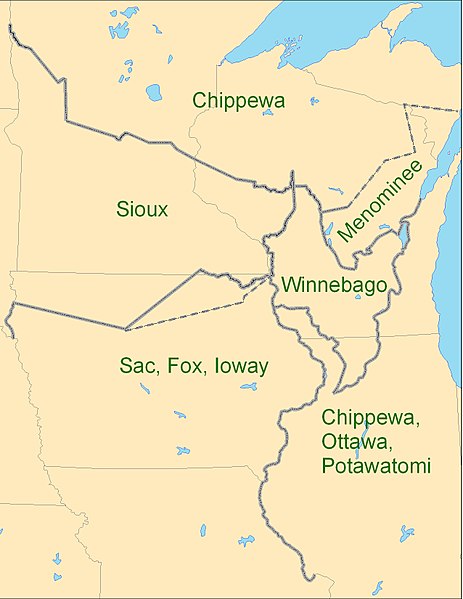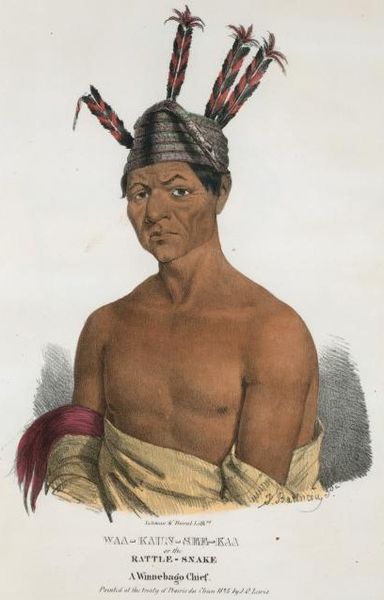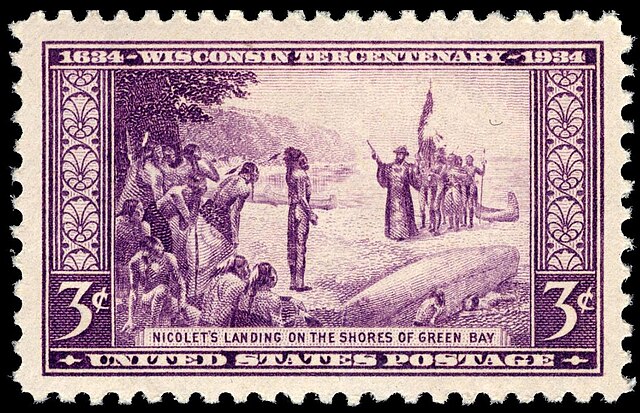The Winnebago War, also known as the Winnebago Uprising, was a brief conflict that took place in 1827 in the Upper Mississippi River region of the United States, primarily in what is now the state of Wisconsin. Not quite a war, the hostilities were limited to a few attacks on American civilians by a portion of the Winnebago Native American tribe. The Ho-Chunks were reacting to a wave of lead miners trespassing on their lands, and to false rumors that the United States had sent two Ho-Chunk prisoners to a rival tribe for execution.
Red Bird, dressed in white buckskin for his surrender to U.S. authorities, with Wekau
Tribal boundaries negotiated at the 1825 Prairie du Chien treaty.
An 1825 portrait Waukon Decorah, one of the Ho-Chunk chiefs who surrendered Red Bird to the Americans.
Wisconsin is a state in the Upper Midwestern region of the United States. It borders Minnesota to the west, Iowa to the southwest, Illinois to the south, Lake Michigan to the east, Michigan to the northeast, and Lake Superior to the north. Wisconsin is the 25th-largest state by land area and the 20th-most populous.
Jean Nicolet, depicted in a 1910 painting by Frank Rohrbeck, was probably the first European to explore Wisconsin. The mural is located in the Brown County Courthouse in Green Bay.
The 300th anniversary of Nicolet's landing in 1634 is commemorated on a U.S. stamp, issued by the U.S. Post Office in 1934
The Little White Schoolhouse in Ripon, Wisconsin, held the nation's first meeting of the Republican Party.
The Wisconsin 8th Volunteer Eagle Regiment with Old Abe







